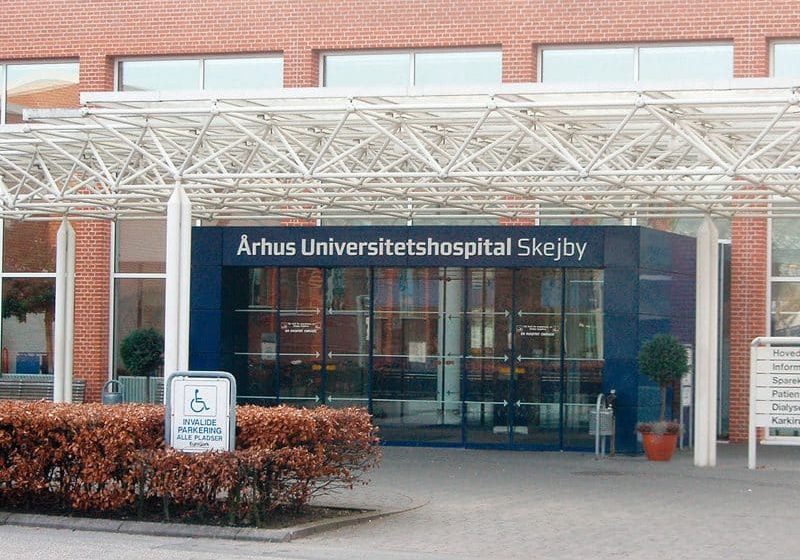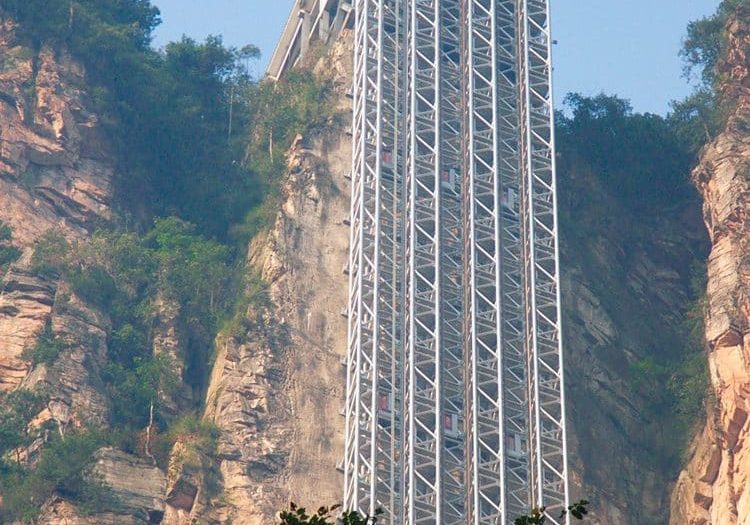Novotel Paris Tour Eiffel Hotel hosts well-organized elevator-industry technical conference in its 20th year.
by Robert S. Caporale, MSc
The nearly continuous rainfall that occurred during the week of July 7 in the beautiful city of Paris did little to dampen the spirits of the 200 attendees of the 2014 Elevcon Congress. As it poured throughout most of the city, elevator-industry members from 26 nations trickled into the Novotel Paris Tour Eiffel Hotel during the weekend prior to the event, with most making arrangements to enjoy the sights, sounds and exquisite cuisine of the world-renowned, elegant fashion capital of the world.
Situated on the left bank of the Seine River that winds its way through the heart of Paris and within walking distance of the Eiffel Tower and its historic Otis elevators, the Novotel was the perfect place to hold the elevator industry’s premier technical conference. Registration for the event and exhibit booth setup commenced on Monday, and the three-day conference got underway the following morning.
The conference was masterfully organized by Joseph Stier and his son, Gil. The program was arranged, coordinated and kept on track by International Association of Elevator Engineers (IAEE) Conference Chairman Ami Lustig. The hotel facilities were second to none, and the conference hall was the best your author has seen during his 20 years of covering elevator-industry events. Readers will see in the accompanying photos that the theater-style seating gave all attendees terrific visibility of the presentations from any location in the room.
The event got off to a prompt start with a welcoming presentation by IAEE President John Inglis. He pointed out that the structure and elevators of the Eiffel Tower, a world-renowned icon for the elevator industry, were among the significant technical innovations of the 19th century. In keeping with this theme, Inglis emphasized that Elevcon provides the opportunity for attendees to learn about and gain confidence in elevator-industry innovations. He also emphasized that these events offer excellent opportunities to meet with the premier elevator-industry experts to learn how to maintain the level of safety for which the industry has become known, and to consider how to deal with challenges.
Lustig also welcomed attendees and presented a brief rundown of the conference schedule, while offering his view of the current state of the industry. Lustig indicated that modular construction of buildings was on the rise in many areas of the world, and its effect on the elevator industry is going to be huge. Citing major high-rise buildings in Asia and North America being built in this manner, Lustig stated this method of construction is extremely cost effective and the elevator industry must be prepared to embrace this innovative method of construction by providing conveying systems that can be readily coordinated with and installed in such buildings. Lustig closed his presentation by providing recognition and gratitude to event sponsor Otis for its support and invitation to hold the event in Paris. With that, the conference speakers were introduced, and Elevcon got underway.
Otis’ Rick Pulling provided a rundown on the Eqho Tower elevator modernization in the well-known La Défense business district of Paris. After providing the building’s elevator specifications, he played a video of the hoisting of four new gearless machines to the top of the building by helicopter in record time. This certainly whetted the appetites of the attendees and gave them all the more reason to look forward to the upcoming field trip (see sidebar p. 57) with eager anticipation.
Pulling indicated that when construction of the Eiffel Tower was originally announced, most Parisians thought it had “no chance” of ever being completed. He compared this to similar sentiments expressed by some people in the elevator industry when the first Elevcon was proposed and pointed out that, like the Eiffel Tower, “We are here today at the 20th ‘no chance’ Elevcon conference.” This was a fitting tribute to the event’s organizers and participants.
The next speaker was Dr. Lee Gray of the University of North Carolina. An elevator-industry historian and researcher, Gray presented the history of the Elevcon events and provided an interesting statistical analysis of the makeup of the conference attendees throughout the years. (See the following article, “Elevcon 1986-2012”.) Following Gray’s presentation, the technical sessions got underway, using what has become the typical Elevcon format of presentations and panel discussions (see sidebar on p. 55). Papers presented were among the best Elevcon’s 20-year history has seen. Presented papers are included in their entirety in Elevator Technology 20, Proceedings of Elevcon 2014, edited by Lustig, available at www.iaee-association.com and www.elevatorbooks.com.
Opening Reception
In recognition of the 20th anniversary of Elevcon, sponsor Otis provided an Opening Reception that allowed time for attendees to mingle and get better acquainted with each other, while enjoying good food and beverages in a relaxed atmosphere.
Poster Sessions
To better accommodate the large number of papers submitted for presentation, provisions were made for some papers to be presented by their authors during Poster Sessions. As shown in the accompanying photos, a number of these sessions ran simultaneously with conference coffee and lunch breaks.
Conclusion
As Elevcon drew to a close and the event’s attendees, sponsors and organizers were recognized for making it a success this year, it was announced that during the IAEE General Assembly meeting, Lustig had been elected President of IAEE, and Inglis had been appointed to the position of president emeritus of IAEE. With that, safe travels were wished to all, and Elevcon 2014 was brought to a close. The next Elevcon will be held in 2016 in Spain and sponsored by ThyssenKrupp Elevator.
Elevcon Papers Presented
- “Elevcon 1986-2012” by Dr. Lee Gray
- “Super High Rise Propulsion Technology” by Z.J. Piech
- “The Articulated Funiculator” by Fritz King, Lars Hesselgren, Peter Severin, Patrik Sveder, David Tonegran and Sirpa Salovaara
- “Adjustable Double Deck – The Efficient Traffic Solution” by Elena Cortona and Frankie Schmid
- “Sharing Elevator Capacity: Exploring the Unused Potential of Stacked Mixed-Use High-Rise Buildings” by Jochem Wit
- “A Quasi-Dynamic Model for Energy Consumption Analysis in Lifts” by Ivan Echeverría, Fernando Arteche, Mateo Iglesias, Alfredo Gómez, José Alberto Roig and Pedro González
- “Determination of Loads Acting on Guide Rail Fixing Under Certain Loading Condition” by Sühan Atay, Eren Kayaoğlu, Adem Candaş, C. Erdem İmrak, Sefa Targıt and Yusuf Z. Kocabal
- “Early Application of Underground Funicular ‘Tunnel’ in Istanbul” by Kayaoğlu, Candaş, Kocabal and İmrak
- “Effect of 2011 Van Earthquake on the Elevators” by İmrak and Ferhat Çelik
- “Elevator Industry – Asian Involvement” by K. Rajah Venkatraman
- “Evolution of Elevator Doors for EN 81-20/50 Compliance” by Valentina Pinelli and Thomas Lernet
- “Transforming the Lift Space from a Square Box to an Exciting Environment” by Lazaros Asvestopoulos, Andreas Zapatinas, Triantafyllos Fournaris and Christina Kotikosta
- “Use of Elevators During Emergencies” by David McColl
- “Elevators for Fire Service Access and Occupant Evacuation” by John Antona
- “Comparison of Concepts for Evacuation Lifts” by Ashiqur Rahman and Wim Offerhaus
- “Proper Qualifying of Elevator Brakes” by Johann Eberle
- “The New Standard EN 81-77 – Lifts Subject to Seismic Conditions” by Paolo Tattoli
- “The Global Relevance of Performance Based Codes” by Louis Bialy
- “Impact of EN 81-20 and EN 81-50 Standards” by Esfandiar Gharibaan
- “An Evolution of Elevator Passenger Grouping” by Theresa M. Christy
- “The Use of Numerical Methods to Evaluate the Performance of Up Peak Group Control Algorithms” by Lutfi Al-Sharif, Mohamed Hussein, Moh’d Malak and Daoud Tuffaha
- “Elevator Dispatching” by Richard D. Peters
- “Simulation, Validation and Analysis of the Energy Consumption of Elevators” by Ingo Pletschen, Stephan Rohr and Ralph Kennel
- “An Effective Energy-Saving Elevator” by Kazuhiko Takasaki, Ryo Ootsubo, Junji Takeda and Shuichi Nojima
- “Energy Storage and Recovery System for Lift” by Sebastiano Acquaviva
- “Rigid Chain Technology for Elevators” by Said Lounis, Iain Forbester, Bill Koons and Eric Michaut
- “Door Technology for High Rise Applications” by Giuseppe De Francesco
- “System Analysis and Architecture Methodologies to Drive Innovative Electrical Systems” by Daryl J. Marvin, Dang V. Nguyen, Peter Herkel and Dirk H. Tegtmeier
- “Modular Systems Replace Welded Support Structures” by Michael Merz
- “Up-Peak Roundtrip Time in Theoretical Calculation, Traffic Simulation and Reality” by Janne Sorsa and Marja-Liisa Siikonen
- “Analytical, Numerical and Simulation: Six Methods for Evaluating the Elevator Round Trip Time” by Al-Sharif, Ahmad M. Abu Alqumsan and Ahmad T. Hammoudeh
- “Analysis of Possible Two Dimensional Elevator Traffic Systems in Large Buildings” by Dr. Albert So, Al-Sharif and Hammoudeh
- “Group Management Control that Improves Transport Capability and Enhances Energy Efficiency” by Tomoaki Maehara, Takahiro Hatori, Akiyuki Tsuboi, Takehisa Nishida, Keiichi Aida and Toshifumi Yoshikawa
- “Service Lifts in Wind Turbines: ‘Which Safety Rules are Applicable?’” by Carl van den Einden
- “HERIOS: Remote Monitoring and Control Systems for Elevators” by Tooru Katou, Ryouichi Sakai and Yasuyuki Nanba
- “Risk Potential of Safety Gears – Inspections with Test Weights Show a Lack of Clearness!” by Tim Ebeling
- “Advantages of Implementing M2M and Cloud Services in Retrofitted Elevators” by Guy Gotlieb
- “Usage of Voice Recognition inside an Elevator and Its Benefits” by Eleftherios Parageorgiou, Nikolaos Stratigakis and Lazaros Asvestopoulos
Visit to the Eqho Tower
Jean de Fontenay
The Eqho Tower (formerly the Descartes Tower) was built in 1988. The edifice takes the form of a parallelepiped extruded on the medium half cylinder. It includes 41 levels and rises 140 m to contain 89,000 m2 of offices, in addition to its 1,200 parking spaces. Its vertical-transportation solution (Otis Elevonic elevators manufactured by Otis France and 2-hr. fireproof doors) is organized around three elevator groups placed on either side of the building’s half-cylinder structure. The curve of the half cylinder’s hollow façade illuminates the horizontal walkways connecting the lift groups.
The tower housed the offices of IBM Europe until November 2009. In 2011, real-estate company ICADE, a subsidiary of the French Public Caisse des Dépôts, invested in the complete restructuring of Eqho Tower with architects B. Hubert and M. Roy. Elevator modernization consulting was performed by Lerch Bates France. This included a renewal of the building’s façade and was completed at the end of 2013. In it, Otis France replaced all machine-room and hoistway equipment, in addition to all elevators’ 2-hr. fireproof doors. The company also installed its Compass destination-control system on all passenger elevators and supplied two scenic elevators in the atrium. Otis cleaned out the residual asbestos in the elevator hoistways, and the old elevators and escalators were dismantled. In June 2014, KPMG signed a 12-year lease for the rental of 40,468 m² of offices.
Equipment included:
- Three passenger elevator banks (20 elevators with AC, variable-frequency [VF], regenerative drives with speeds of 1.6, 4 and 6 mps)
- Two service elevators with AC, VF and regenerative drives at 2000 kg capacity and 1.6 mps speed
- Two scenic elevators at 1275 kg capacity and 1.6 mps speed
- Three Otis Gen2® units and a dumbwaiter
- Supply and maintenance of five to seven jobsite elevators to transport workers and material
As it was difficult (particularly in terms of personnel safety for all trades) to hoist the new elevator machines through halls, hoistways and corridors to the top-floor machine rooms, Otis France hoisted the 10 gearless machines for the high banks and the two service elevators onto the building’s roof terrace with a special Puma helicopter able to carry 6 mT. Special authorizations had to be obtained from EPAD (Etablissement Public de la Défense), the French Traffic Police and the French Air Traffic Regulation Direction. The hoisting operation was made in 40 min.
Jean de Fontenay is senior product manager at Otis Europe EHRD/Paris la Défense. He may be contacted at email: [email protected].
Get more of Elevator World. Sign up for our free e-newsletter.










